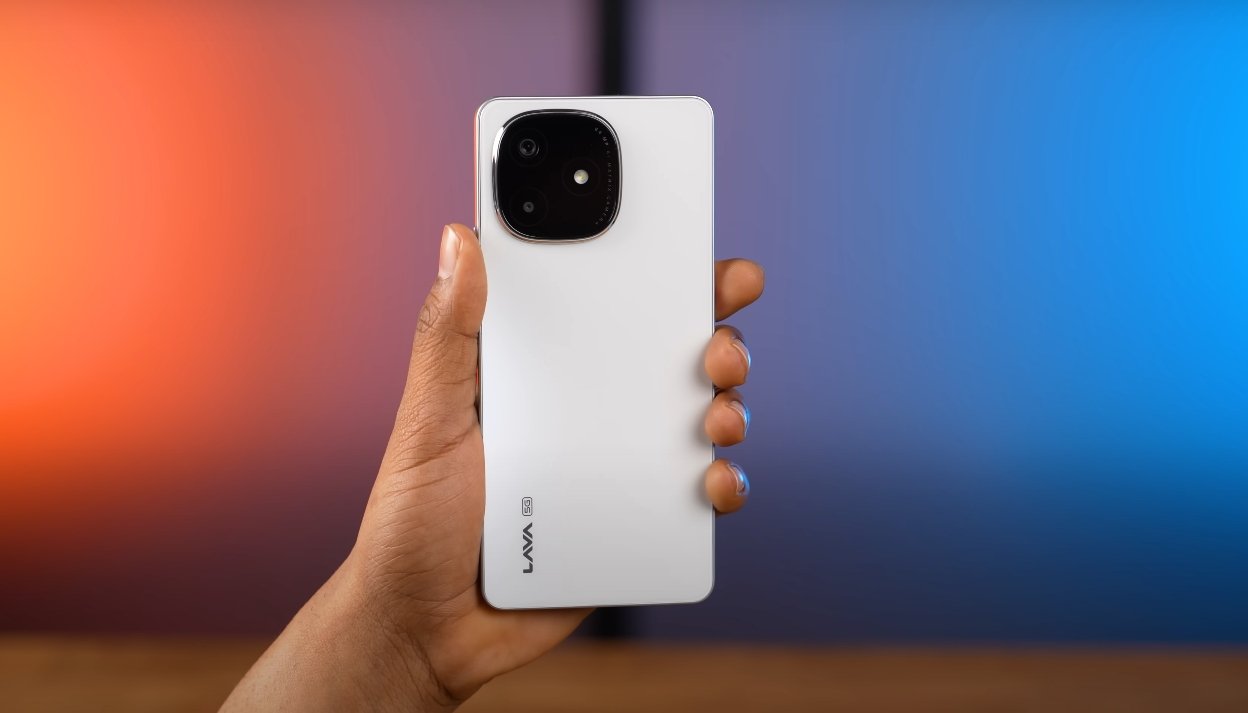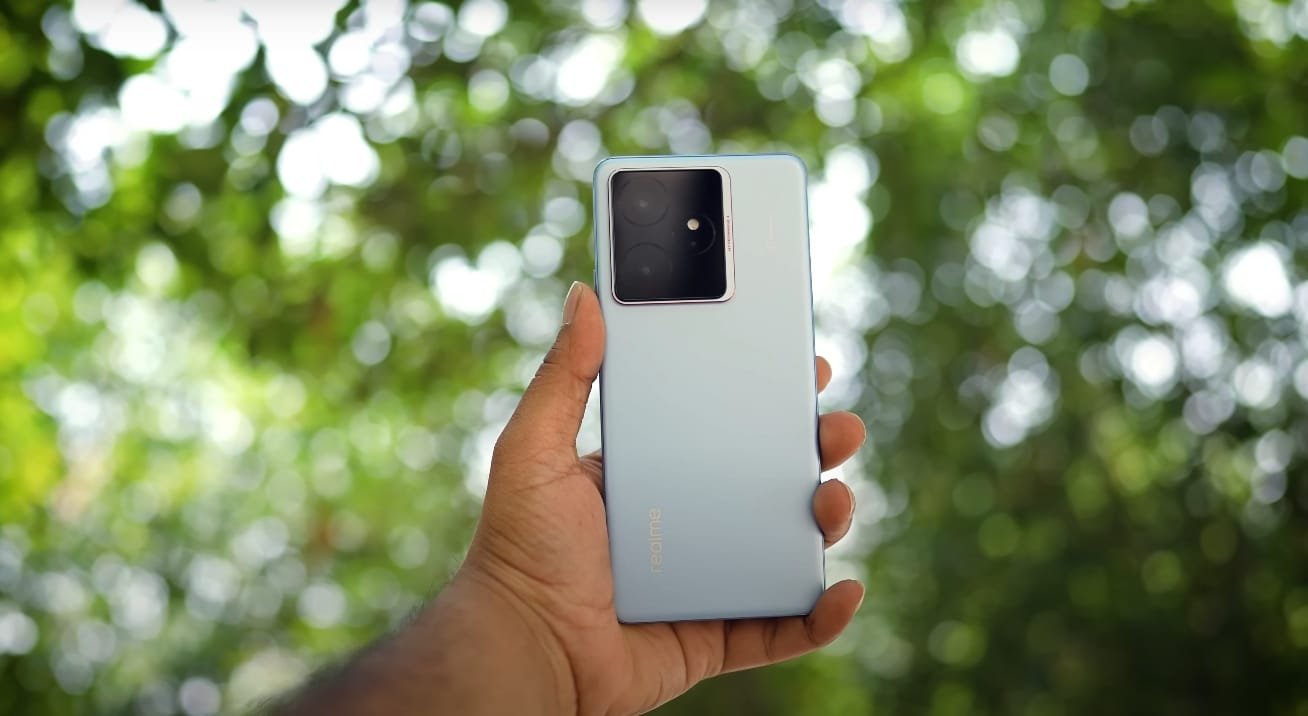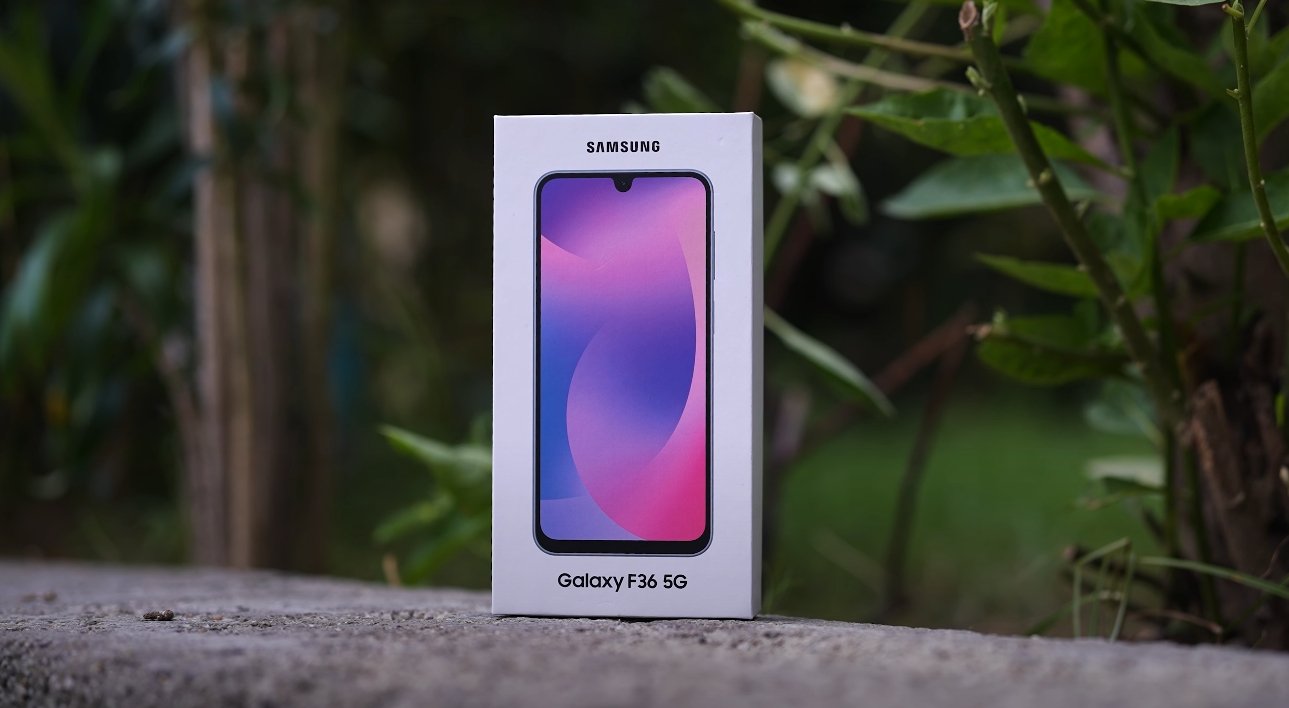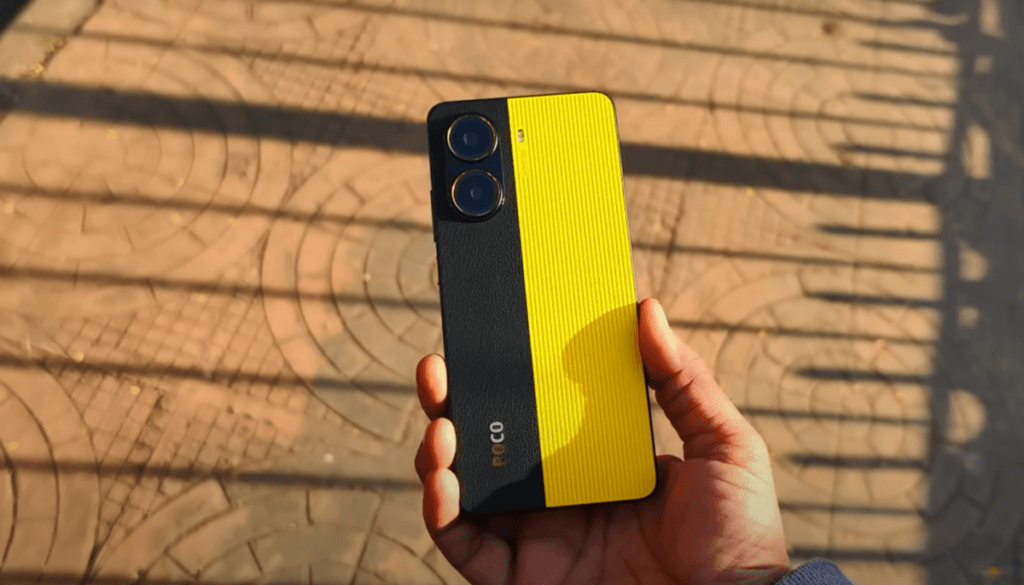Both are very compact phones and they are almost the same size as the regular base flagships, basically the iPhone 16 and the Pixel 9. And of course, considering the dimminitive size, they’re very comfortable to hold and use. But the interesting thing to note is that iPhone is actually lighter and slimmer compared to Pixel. And to keep costs low, both the brands have actually, you know, indulged in some corner cutting.
Basically, with the iPhone, what you get is a, you know, glass sandwich design with a metal frame, which is nice. But unlike the iPhone 16, which actually comes with ceramic shield on the front and the rear, on the 16e, you only get ceramic shield on the front, but normal glass on the rear. That is still fine considering the fact that the 16e still feels very premium to hold and use.
Material used on Google Pixel 9a and Apple iPhone 16e
Now, in comparison, the problem with the Pixel 9a is that it uses plastic on the rear. Of course, you get a metal frame, but plastic in 2025, uh, Google could have used better material. That’s not it. That analogy doesn’t make sense because Pixel 9 actually has USB 3.2 which iPhone doesn’t because it has USB 2.0. However, you do get uh you know IP68 rating on both and wireless charging support as well. So, this is what makes them flagship grade. When you look at the camera placement on the rear, obviously, iPhone does it better because it looks symmetrical compared to this very weird placement on the Pixel. I do like the fact that both are, you know, almost flat. I will say flush with the back of the phone, which is a nice thing. Additionally, on the Pixel 9a, you get Corning Gorilla Glass 3 protection for the display on the front and Corning Gorilla Glass 3 in 2025 is like using USB 2.0 on a phone in 2020.
Google Pixel 9a and Apple iPhone 16e Display
Basically what you get is far better performance in Genshin Impact compared to the Pixel 9a. Obviously you can expect anywhere close to 60 fps average FPS whereas with the Pixel 9a it doesn’t even touch 40 fps.The sizes of the bezels on the Pixel 9a and the notch on the iPhone 16. Apple and Google, we are in 2025, not 2019. But that’s not it. With the iPhone 16, it’s not just the notch that’s a problem.
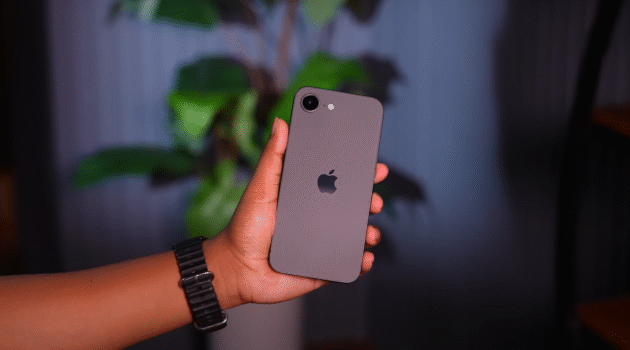
It’s a panel straight from the iPhone 13, which was launched in 2021. By the way, one thing to note is that on the Pixel 9a, when you take the phone out of the box, it is set to 60 Hz by default. The refresh rate is still 60 Hz, and the high brightness mode nits and the HDR peak brightness are nowhere close to what the Pixel 9a can achieve. You can clearly see that the Pixel 9 at 120 Hz is definitely smoother compared to the iPhone 16. That’s not it. When you’re watching HDR content on YouTube or Netflix, which is supported on both, by the way, you will notice that the display pops on the Pixel 9a. Even when you take it outdoors, the Pixel 9a is brighter compared to the iPhone 16. And if you’re gaming easily, the iPhone 16 should be the phone of choice despite the fact that it has a tiny display.
Bluetooth and speakar of Google Pixel 9a and Apple iPhone 16e
Now, one more advantage on the Pixel 9a is the fact that since it’s an Android phone, you do get support for high-res Bluetooth codecs like LDAC. Apple obviously doesn’t give you that with the 16D. And with respect to the speakers, I’m happy to report that both are proper flagship grade speakers.
However, when you look at the color accuracy of both the displays, they’re very well tuned displays and it’s very difficult to tell the difference in colors between the two. So, what you get is a very rich sound with a good amount of bass as well. But when we compared the two, we felt like the 16E was slightly louder and slightly better in terms of sound quality with the speakers.
Variants of Google Pixel 9a and Apple iPhone 16e
The Pixel 9, what you get is the 8 256GB variant as the only variant that’s available, and it’s LPDDR 5X RAM type and UFS 3.1 storage. In comparison, the iPhone 16 has 8 GB of RAM and 128 GB of storage. and 8 GB of RAM actually enables Apple intelligence which I’ll talk about in a bit. That said, A18 is infinitely superior compared to the tensor G4. It beats it in every single benchmark and in general everyday performance as well. As for the chipsets with the Pixel 9a, you get the same tensor G4 that’s available on the Pixel 9 series. And with the iPhone 16, you get the same A18 uh but with one GPU core less, which is also available on the iPhone 16 series.
In Geekbench, single core and multi-core scores, the iPhone scores higher, much higher compared to the Pixel 9. In fact, we also ran Geekbench’s AI benchmark. This time, again, iPhone beats Pixel. And in 3D Mark Wireless test, the iPhone 16 has higher GPU stability, has a higher best loop score, and higher FPS as well. But it loses the same amount of battery life as the Pixel 9a, which shows that it’s pushing for performance.
Performance wise Google Pixel 9a and Apple iPhone 16e
Even if Android were to get those games the Pixel 9 will definitely not be able to play it. Net performance is largely good on both. You get almost every single network feature that you need. The Pixel’s battery life is also very good. Charging speeds are terrible on both. You guys know it. I don’t even have to mention it. But if you still want to wait to see which one charges up faster, the iPhone 6D will charge up faster. But the interesting thing about the 16e is that you get the new C1 modem. And with that, what happens is that you get better power efficiency.
Despite the fact that the Pixel 9 has a larger battery size compared to the iPhone 16, but yeah, 16’s battery performance is definitely better. But let it be known that if you drop this Pixel down to 60 Hz, you will definitely get better battery life, so it could match up to the iPhone 16 as well. Now, with respect to cameras, the Pixel 9a definitely has an advantage in terms of the hardware because it comes with a dual camera setup on the rear as opposed to the single camera on the iPhone 16.
Camera of Google Pixel 9a and Apple iPhone 16e
Apple thinks it’s absolutely fine to ship a phone with a single camera in 2025. Anyway, camera hardware is one part of the equation. Let’s take a look at the samples. Now, comparing the primary cameras, the iPhone 16 captures more details and sharper textures when you look at the 100% crop. The other thing is with the 16 you do not get photographic styles which is available in the 16 series otherwise which is a bit of a bummer because with photographic styles at least you could change the colors according to what you wanted. And that’s mainly because you get a 24 megap output on the iPhone compared to Pixel’s 12 megapixels.
The same is true for the 2x in sensor crops thanks to the fusion camera tech on the 16e. And even at 4x and 8x, we feel like the iPhone 16 actually takes better looking shots compared to the Pixel. With respect to color reproduction, we felt like the Pixel 9a was actually better than the 16e. While both get the orange color wrong, uh the Pixel gets the pink color of the packet right here.
Now in HDR samples you can see that the pixel controls highlight slightly better but it kind of crushes the shadows completely. I’ve had some problem with pixel skin tones in the past and that continues with the 9a as well. Overall I kind of prefer iPhone’s HDR tuning. When you shoot people against the light you can see that both are doing fairly well here and there is no bloom around the face. That reddish skin issue continues. Now, when it comes to portraits, you can shoot portraits at 1.5x, 2x, and 3x on the Pixel 9a whereas iPhone can do it at 1x and 2x. But if you ask me which one I prefer, I will actually take the iPhone here because you get better semantic segmentation compared to the 9 in. So, both are good.
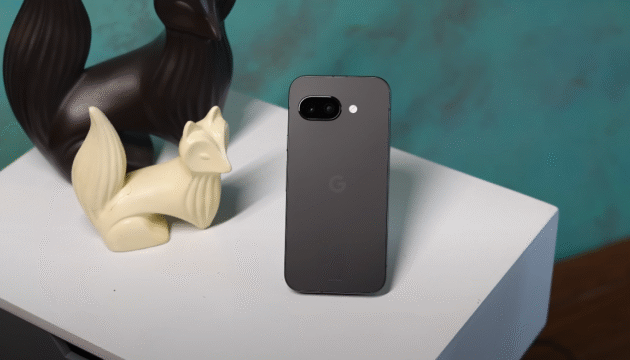
The iPhone’s video is slightly better in terms of details uh in daylight and low light. And I also prefer iPhone’s audio quality over Pixel. But it’s like a slight advantage on the iPhone. So guys, this is a 4K 60 video camera comparison of the iPhone 16 and the Google Pixel 9a.
Considering the fact that Google has a proper ultra wideangle camera, it gets an immediate win obviously. And the ultra wideangle camera actually performs well whether you’re shooting photos in daylight or low light. Obviously, we would have preferred a 48 megapixel ultra wide, but a 13MP is also not too bad. Skin tones are definitely close to neutral on the iPhone. The Pixel 9a can shoot 4K 30 fps videos with the ultra wideangle camera, and it’s good video quality, decent amount of stabilization, good amount of details, no problem there.
Updates of Google Pixel 9a and Apple iPhone 16e
Google is promising 7 plus 7 years of software updates. With iPhone, you generally get about 6 to 7 years of updates as well, and it’s running iOS 18 out of the box. And the experience is very premium on both the phones. I didn’t notice any bugs as such. with the iOS 18 update that is running, the stable update that’s running on the 16e, we were actually happy that there was, you know, very few bugs to contend with because with the iPhone 16 Pro Max that I’m using, there are too many bugs. And when it comes to AI features, you do get
Our finel thoughts who is better Google Pixel 9a or Apple iPhone 16e
With the iPhone 16, you get a better build quality, you get superior performance, you get longer battery life, and Apple’s ecosystem features, too. But there is one more advantage of the Pixel 9a is that for a lower price you actually get a higher base storage variant of 256GB which makes it more value for money
